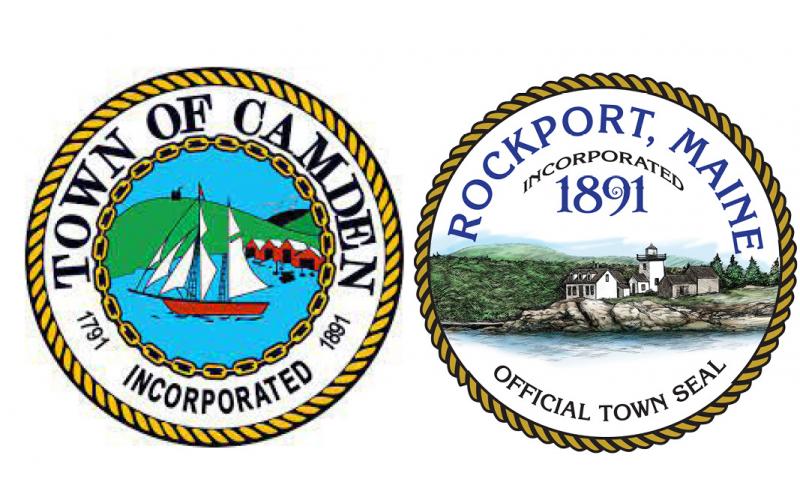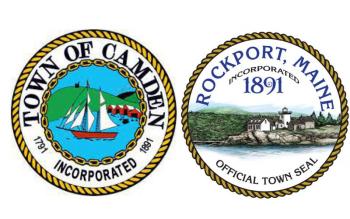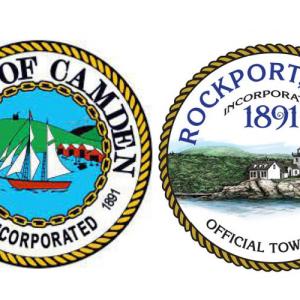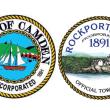Camden and Rockport record slight hike in property taxes; state valuation of each town rises
CAMDEN and ROCKPORT — Annual tax bills were mailed at the end of August to property owners in Camden and Rockport, and both reflect a hike in the mil rate.
A mill rate is the unit used to calculate how much to tax a piece of property to fund the municipal, public school and county budgets, all approved by voters at annual town meeting, which occurred in June in both municipalities.
This year, the mil rate in Rockport is 17.05, up .24 cents, or 1.43 percent, from the 16.81 mil rate of 2020. Rockport’s mil rate has fluctuated over the past decade, and reflects ever-changing factors; in 2006, it was 9.06; in 2003, it was 15.95.
In Camden, the 2021 mil rate is 15.35, up from 15.03 in 2020, a .32 cent difference, or 2.13 percent.
“The median value of a single-family home is Rockport is $277,200,” said Kerry Leichtman, assessor for the towns of Rockport and Camden.
The 24-cent mil rate increase means that homeowner with real estate assessed at $277,200 will pay an additional $66.53 in taxes this year.
The median value of a single-family home in Camden is $333,900. For a home with that assessment, the 35-cent mil rate increase means its owners will pay an additional $116.87 in 2021 property taxes.
The annual reckoning of the mil rate for municipalities is based on various factors, including how much the public schools are spending on education, how much the county is spending on the Sheriff’s Department, jail, 911 dispatch, the county airport in Owls Head, and how much the towns are spending on roads, administrative work, harbors and other infrastructure.
Currently, of the pie that consumes total property tax collected in Rockport, 67 percent is spent on public education ($10.8 million), 26 percent on municipal government ($4.1 million) and 7 percent on county ($1.1 million).
In Camden, the breakdown is similar: with $12.9 million spent on public education, $6.2 million on municipal government, and $1.5 spent on county government.
And what property owners pay in taxes also depends on the total taxable real estate each town records.
In Camden the total taxable real estate value, according to the State of Maine, is $1.3 billion, up $16 million from 2020, or 1.22 percent. The annual state valuation lags actual market values and municipal assessments by nearly two years by the time it is final and certified, according to Maine Revenue Services and the State Tax Assessor.
The other collectible tax that municipalities levy is on personal property. Personal property taxes are collected on business assets, and include furniture, fixtures, computers, software, machinery and other equipment.
Total personal property value in Camden in 2021 is $8.1 million, down $1 million, or -11.02 percent, from 2020.
In Rockport, the total taxable real estate value in 2021 is $924 million, up $6.2 million from 2020. The personal property value, however, is $12.9 million, down $2.25 million , or -14.85 percent, from 2020.
Real estate that is not taxed is property owned by government, churches, public and private schools and other organizations that are classified as charitable and benevolent.
In Rockport, the total exempt real estate and other deductions is $163 million, up 8.32 percent from 2020.
In Camden, the total exempt real estate is $143.4 million, down $1 million from 2020.
Help from the state is minimal: Rockport will receive $308,000 in revenue sharing in 2021; Camden, $350,000.
This year, there are a few factors that affected Rockport property taxes, including the consolidation of physicians offices onto the Pen Bay Medical Center campus in Rockport.
Pen Bay Medical Center, a MaineHealth-owned complex that includes a hospital along with four separate buildings for doctors’ practices and a hospice house, is not taxed by the town. Where formerly the older of the three physicians’ building on the campus housed two floors of taxpaying doctors, the building now houses services and practices that fall under the nonprofit MaineHealth, and therefore, are not taxed by the town.
As such, Rockport lost $3.9 million in taxable real estate alone on that medical reorganization, said Leichtman.
Nor does MaineHealth contribute payment in lieu of taxes to Rockport, as do other nonprofits in town; e.g., Aldermere Farm or the Maine Center for Furniture Craftsmanship.
In a municipal newsletter, Rockport Finance Director Megan Brackett noted that additional expenses crept into the budget that have, “an impact on our bottom line.”
She said that legal fees arising from the dispute over a hotel currently under construction in Rockport Village amounted to $87.547 as of June 30, and cited $14,599 in uncollected personal property taxes Rockport businesses.
Leichtman cited that $87,547 spent on legal fees as disappointing, with that one expense eating away at the overall ability of the town to reduce taxes.
A proponent of concentrated commercial growth, he anticipates the new hotel to be valued at $3.4 million and to add $68,000 annually to the tax coffers in real estate taxes, along with another $30,000 to $40,000 in personal property taxes.
To Leichtman, concentrated business activity will help Rockport reduce its property tax burden.
“Commercial growth is important,” he said.
Reach Editorial Director Lynda Clancy at lyndaclancy@penbaypilot.com; 207-706-6657




























